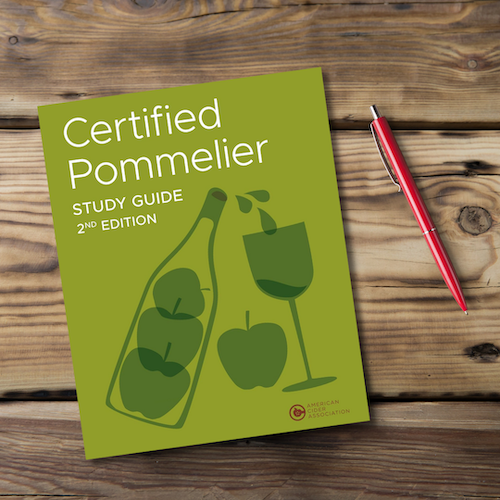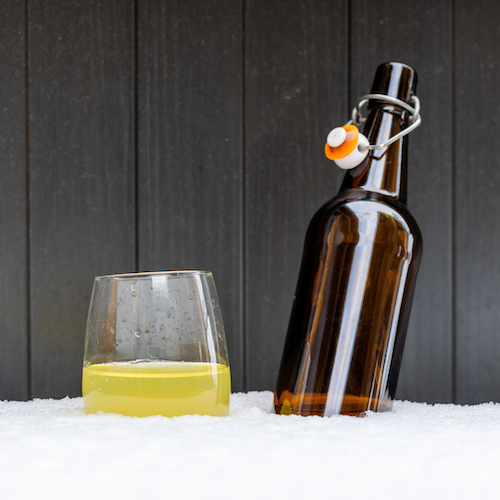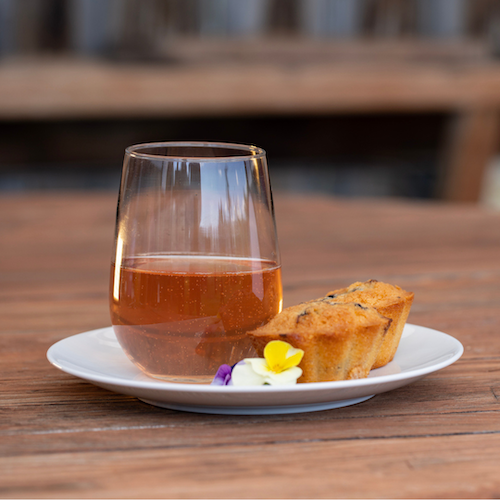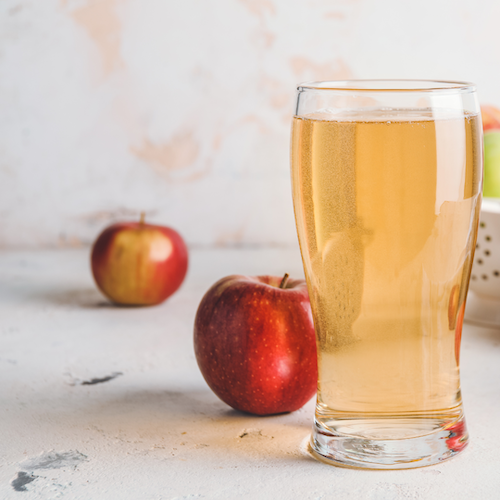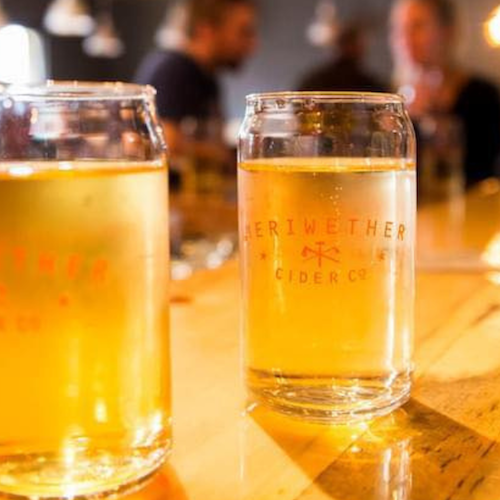Posts Tagged ‘home’
ACA Releases 2nd Edition of Certified Pommelier Study Guide
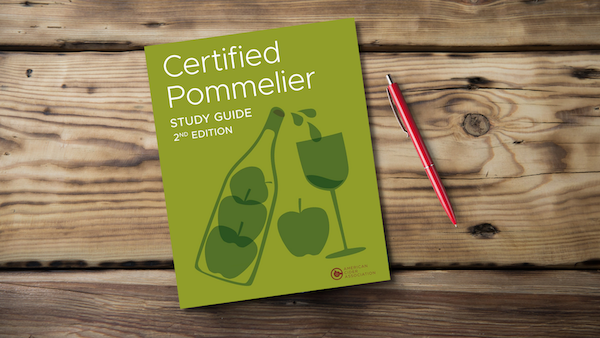
The ACA is thrilled to introduce the second edition of its Certified Pommelier Study Guide, designed specifically for students preparing for level two of the CCP program. With the CCP program expanding globally, the Certified Pommelier Study Guide has undergone a significant update to offer a more comprehensive overview of the cider industry from an international perspective. This new edition now includes sections on emerging sectors like low and no-alcohol products, catering to the evolving landscape of the industry. The new edition is also available digitally for the first time, providing students with more ways to access the guide.
New material in the second edition will be the source for questions on the exam beginning in 2025, so candidates who have already purchased the first edition will have all the material that they need for any exam being held in 2024.
Additionally, the ACA has revamped its product categorization system, known as the Cider Families, to better align with global marketing practices, providing students with a more accurate portrayal of the market. The revised Cider Families guide offers a fresh take on product categorization, reflecting the dynamic nature of the cider market on a worldwide scale.
For those interested, the updated Cider Families guide can be accessed on the ACA website, while the second edition of the Certified Pommelier Study Guide is now available for purchase on Amazon in both print and digital formats. Information from second edition will not appear on Certified Pommelier exams until 2025 to allow people the opportunity to purchase and review the new study guide.
For aspiring Certified Pommeliers and cider enthusiasts alike, the release of the second edition of the Certified Pommelier Study Guide marks a significant milestone in the CCP program. By incorporating a more global perspective and addressing key trends in the industry such as the rise of low and no-alcohol products, the ACA continues to demonstrate its commitment to providing relevant and up-to-date resources for industry professionals.
Urge Congress to Support the Bubble Bill
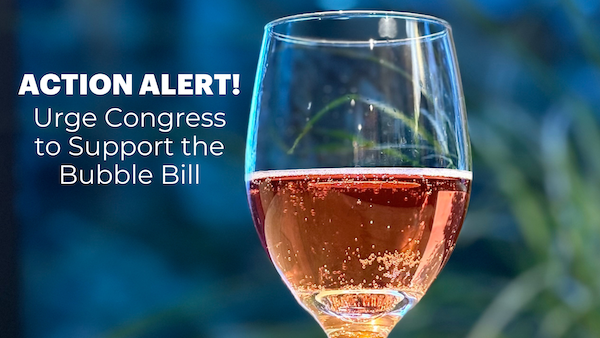
Earlier this year Representatives Earl Blumenauer (OR-D) & Mike Kelly (PA-R) introduced the Bubble Tax Modernization Act of 2024 (HR 7029) to the 118th Congress. Since then Representatives Suzanne Bonamici (OR-D), Andrea Salinas (OR-D), Lori Chavez-Deremer (OR-R), and Val Hoyle (OR-D) have signed on as co-sponors of the legislation. The “Bubble Bill” will amend a minor carbonation tax disparity for lower alcohol wine, cider and mead made with fruit. Read the complete bill here.
Despite the popularity of bubbly beverages, the carbonation tax–colloquially called the ‘bubble tax’ on fruit wine, fruit cider, and fruit mead makes carbonating these agricultural products at sparkling levels cost prohibitive. Most craft beverage entrepreneurs can’t afford to carbonate these products at the level the market wants. The result is that an important American agricultural sector is falling flat.
Current tax rates for low-ABV carbonated fruit wine, cider, and mead are $3.30 or $3.40 per gallon. Meanwhile low-ABV carbonated grape wines have a current tax rate of $1.07 per gallon. In addition, fruited beers, seltzers, hard kombucha, and ready-to-drink canned cocktails are carbonating freely to give consumers the bubbles they want.
Raising the floor of the carbonation tax threshold to include ALL low-ABV wine, cider, and mead to 0.64 grams of carbon dioxide per hundred milliliters will allow producers to compete more fairly in the evolving beverage market. The Craft Beverage Modernization and Tax Reform Act of 2020 achieved this for grape-only wines, but fruit-based craft beverages were overlooked. This created an excise tax disparity of $2.00 to $3.00 a gallon depending on the product. For more information download the Understanding Bubble Taxes explanatory document.
Allowing more carbonation will foster more economic opportunities for craft beverage makers, allow for more small producer collaborations, create increased opportunities for farms to stay viable with value-added products, and allow for diversification that could help farms and businesses mitigate disasters such as fires, droughts, floods, or crop disease.
Please ask your Congressional representatives to sign onto the Bubble Bill today to support American craft beverage producers and manufacturers.
ACA Welcomes Sixteen New Certified Pommeliers Following CiderCon® 2024
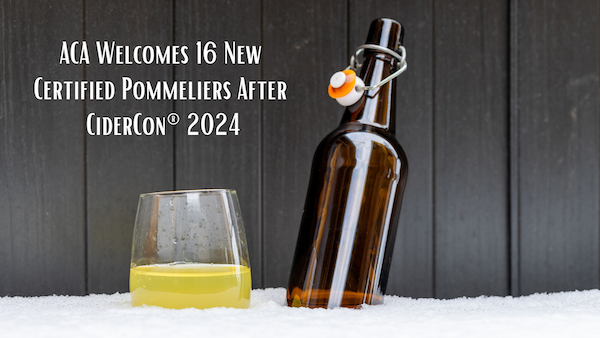
PRESS RELEASE
American Cider Association
Contact: Michelle McGrath
Email: michelle@ciderassociation.org
The American Cider Association is pleased to announce that sixteen individuals successfully passed the Certified Pommelier examination held at CiderCon® 2024 in Portland, Oregon in January. The new Certified Pommeliers from the United States are Andrew Byers of Finnriver Farm & Cidery, Jason Cassidy of The Cider Farm, Daniel James of Pioneer Beverage, Jakob Jordan & Leah Pagett of Bold Rock Hard Cider, Molly Leadbetter of Meriwether Cider, Hard Cider Guy Adrian Luna, Valerie Scott of Duluth Cider, Pete Serventi of Serventi Ranch, Clayton Slaughter of Slaughter Orchard & Cidery, Ashley Wilson of Schilling Cider and Olivia Yi of Brooklyn Cider House. New international Certified Pommeliers are The Ciderologist Gabe Cook of the UK, John Powell of Cider Apples New Zealand Ltd, Lee Reeve of inCider Japan, and freelancer Monika Sut of Italy.
The rigorous exam tested candidates on their understanding of cider production, history, and sensory evaluation. As a result, those newly certified are now equipped with advanced skills to guide consumers through the wide variety of ciders available and to help elevate the cider industry at the point of sale. The ACA congratulates all of the newest Certified Pommeliers on displaying their specialized cider knowledge and evaluation skills!
Early on, the American Cider Association recognized the need to promote specialized knowledge about the cider category. Certifications are increasingly being used to set food and beverage professionals apart. However, most certification programs cover cider in a cursory manner or not at all. With cider being a beautifully nuanced beverage with a diverse set of elements often less understood by food and beverage professionals, the establishment of the Certified Cider Professional (CCP) program in 2016 was a strategic maneuver. Today, the CCP program is designed to educate those on the front-line of cider sales, making it the world’s most comprehensive and in-depth cider appreciation program for food and beverage professionals. Most recently, due to increased inquiries and interest the CCP program has expanded to an international audience. For more information, the ACA press release outlines the international expansion.
The CCP program begins with a Certified Cider Guide (CCG) Level 1 certification to help industry professionals develop a fundamental understanding of cider. The Certified Pommelier (CP) Level 2 takes it a step further by encouraging cider professionals to think critically and showcase a higher level of understanding of the elements of cider. The rigorous testing process consists of four types of questions, including short answer, fill in the blank, essay, and blind sensory–which is based on tasting.
The ACA is dedicated to ensuring that all information tested on the exam is made accessible to anyone who desires to learn. To that end, the ACA released a textbook in March of 2023 to help candidates prepare to take the exam with just one comprehensive resource. The textbook is available for purchase through Kindle Direct Publishing. Additionally, the ACA offers sensory analysis practice webinars and a Facebook study group, continuously updated with resources for exam candidates. Interested candidates can find links to all Certified Pommelier resources on the ACA’s website.
A live sensory analysis webiner is scheduled for March 28, 2024 from 4:00 – 6:00 PM Pacific featuring Meriwether Cider. Those interested in attending can find all the details on the ACA website. Additional sensory analysis webinars will be released at a later date once cider availability for unique offerings has been confirmed. The ACA is also currently looking for additional cideries interested in having their ciders featured in a webinar. Interested cideries can reach out to Education Operation Manager Jennie Dorsey.
2024 Certified Pommelier exams will be held at the following locations:
- April 18: Wolffer Estate Vineyard
- April 27 : Frankfurt, Germany: CiderWorld
- July 23: Bellingham, WA
- August 20: Minneapolis, MN
- October 8: Austin, TX
- February 5, 2025: CiderCon® 2025 Chicago
More details and registration for all exams will be announced as soon as they are finalized.
Contact the ACA’s Education Operations Manager Jennie Dorsey if you have questions about the Certified Cider Professional program or are interested in taking either the Level 1 Certified Cider Guide or Level 2 Certified Pommelier exams. You can also learn more at https://ciderassociation.org/certification.
###
Additional Information:
Bios for all Certified Pommeliers can be found on the ACA website.
ACA Announces International Expansion of Certified Cider Professional Program
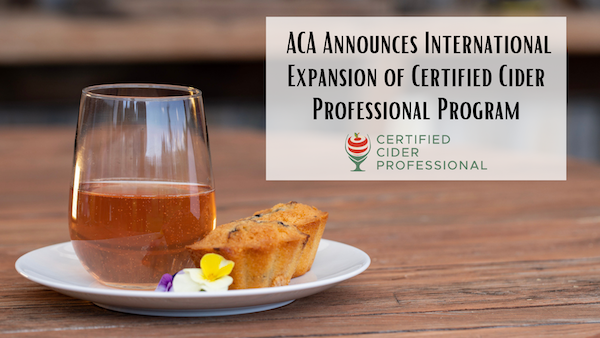
PRESS RELEASE
February 26, 2024
Contact: Michelle McGrath
Email: michelle@ciderassociation.org
The American Cider Association is pleased to announce the expansion of its beverage professional education and certification program to the global cider community. The Certified Cider Professional program was launched at CiderCon® 2016 with a particular focus on the United States. Since then, the certification program has developed to become the most robust and thorough cider appreciation and education program for beverage professionals in the world. Most recently the ACA has revised study and exam materials to have a broader scope, and the ACA’s Certified Cider Professional program is now applicable to anywhere in the world that cider is made and sold.
“We have been getting an increasing number of inquiries about the CCP program from all over the world,” says Jennie Dorsey, ACA Education Operations Manager. “A number of candidates for the second level of certification, Certified Pommelier, have even made a trip to the U.S. just to sit for the exam, so clearly there is an unmet need out there and no other comparable education program available.”
Award winning educator and global cider expert Gabe Cook, aka The Ciderologist, has joined forces with the ACA to help expand its certification program to a global audience. Cook says, “I am delighted to be teaming up with the ACA through CCP to increase the knowledge, respect and passion for one of the world’s truly great and ancient drinks.” He continues, “Now is the time for a unified education program that is applicable and open to anyone and everyone from Seattle to Somerset to Sydney. It is a true reflection of the globalization of cider and indicative of this being an incredibly exciting time for cider.”
Additional updates geared toward program growth include CCP branding. The ACA has newly retitled CCP’s introductory level to “Certified Cider Guide,” and has updated the CCP branding to better distinguish the two offered CCP levels–(1) Certified Cider Guide and (2) Certified Pommelier.
The first international in-person Certified Cider Guide training workshop and exam was held in Melbourne, Australia in the fall of 2023 with the support of Cider Australia. The exam took place following the Australian Cider awards and ten individuals earned the title of Certified Cider Guide.
Additional in-person classes and exams are planned for Europe in the coming months. On-demand virtual training and Certified Cider Guide exams are also available at any time.
The inaugural international Certified Pommelier exam is scheduled to be held in April 2024 to coincide with the Cider World event in Frankfurt, Germany. To earn their title Certified Pommeliers are rigorously tested on their cider knowledge with a written theory exam and a sensory evaluation exam.
“We are very confident in our educational programming, and these recent steps will help us reach more US beverage professionals as well as international ones,” says ACA’s CEO Michelle McGrath. “Gabe Cook is uniquely suited to helping us grow the program overseas, and we’re really excited about the partnership. He works tirelessly for the cider category,” McGrath adds.
There are currently 2,480 Certified Cider Guides and 97 Certified Pommeliers.
The American Cider Association is an organization of cider and perry producers in the United States. The Certified Cider Professional program is helping the ACA reach its vision for the US cider industry which includes but is not limited to the following aspirations: (1) Throughout America, it is widely understood that cider pairs exceptionally well with food, (2) America’s most talented chefs and beverage professionals are promoting cider and food pairings on their menus, in their public relations and on television, (3) US cider is the most coveted cider in the global marketplace.
Visit cidercertification.org to learn more about CCP training and exam opportunities around the world. International certification inquiries can be made with Gabe Cook at Gabe@ciderassociation.org. North America based inquiries can be made with Jennie Dorsey at Jennie@ciderassociation.org.
###
Additional Information:
Certified Cider Professional Logos: CLICK HERE
Certified Cider Professional Photos: CLICK HERE
Gabe Cook Photos and Bio: CLICK HERE
April 17: Level 1 CCG Workshop at Wölffer Estate

Wölffer Estate Vineyards is excited to collaborate with the American Cider Association to host an in person workshop for the Certified Cider Professional Program Level 1 Certified Cider Guide at their cidery. The Level 1 Certified Cider Guide Workshop will be held April 17, 2024 at 1:00 PM Eastern at Wolffer Estate Vineyard, 139 Sagg Road, Sagaponack, New York 11962.
Cost per person is $189 which includes the in person training, instructor led tasting, and test fee. Participants will be able to take the test online immediately after the training or take the test at a later date. ACA members can contact Education Operations Manager Jennie Dorsey for a member discount code.
This is a great opportunity for the New York cider community to gather in person to attend the workshop and get CCG certified. Registration to this event will include a tour.
Lunch and cider will also be available for purchase at our tasting room after the training.
We would love to see anyone who sells cider, works in a tasting room or retail shop, chefs, sommeliers, cicerones, buyers and cidermakers who are interested in cider education and adding a cider certification to their accreditation sign up and join us!
Travel by Car:
Upon arrival, take the driveway all the way up to the Main Cider House (identified by the marquee sign on the building). Parking is available both in front of the Main Cider House as well as in our auxiliary lot (P2), a quick 5 minute walk from the building.
Public Transportation Options:
Bridgehampton location is closest to the winery. Ubers are available and only a short ride from the Bridgehampton stations, about 10 minuets.
Agenda:
- 12:45 PM: Arrival and Check-in
- 1:00 – 2:30 PM: Presentation
- 2:30 – 3:30 PM: Tasting Experience
- 3:30 – 4:00 PM: Take the online CCG 1 test (bring your own laptop)
- 4:00 PM: Enjoy a glass of cider and some food with a view
April 18: Certified Pommelier Exam at Wolffer Estate

TAKE THE CERTIFIED POMMELIER EXAM AT WOLFFER ESTATE VINEYARDS ON APRIL 18!
Are you ready to take the next step in your professional development in the cider industry?
If you have already passed the Level 1 Certified Cider Guide exam and are looking for that next challenge? Now is your chance!
The American Cider Association is pleased to announce a Certified Pommelier™ Exam will be held at Wolffer Estate Vineyards in Sagaponack, New York. The exam will take place Thursday, April 18, 2024 at the Wolffer Estate Vineyards, 139 Sagg Rd, Sagaponack, NY 11962. The exam will begin promptly at 8:30 AM.
*Level 1 Certified Cider Guide certification is a prerequisite for taking the Certified Pommelier Exam. (Haven’t taken your Level 1 Certified Cider Guide Exam? Buy the bundle here! ACA Member discounts are available.)
There’s a discount code available for ACA members who want to take the test. You can find that code in our Resource Hub.
WHAT IS THE CERTIFIED POMMELIER EXAM?
The American Cider Association’s mission is to grow a diverse and successful cider industry by providing valuable information, resources and services to our members and by advocating on their behalf. One way to fulfill this mission is through the Certified Cider Professional Program, a program aimed at educating the front-line of cider hospitality (distributors, retailers, bartenders and more!) while also welcoming journalists and serious cider enthusiasts.
The exam for the introductory level certification, Certified Cider Guide (CCG), is an online test that can be taken at any time. The exam for the more advanced second level of certification, Certified Pommelier, is only available in person. The exam consists of two parts, a written theory exam comprising short answer and essay questions and a blind sensory evaluation of a number of ciders. Passing the introductory level exam is a mandatory prerequisite to sitting for the Level 2 Certified Pommelier exam.
Certified Pommeliers must have a fundamental understanding of all topics covered at the introductory level, but must also be able to think critically and demonstrate a deeper understanding of cider and the cider industry.
The topics covered in the exam are:
- Apples, the Orchard & History
- Cider Making
- Flavor & Evaluation
- Cider Families
- Keeping & Serving
- Food & Cider
- Social Responsibility
The exam is meant to be challenging. The only information necessary for successfully passing the theory section of the exam is contained in the Certified Pommelier Study Guide available on Amazon. To study for the evaluation section of the exam, candidates should consider attending one of the sensory analysis videos available through the ACA’s website or attend one of the regularly scheduled webinars. Access to pre-recorded webinars and registration for upcoming live webinars is available directly through our website.
WHY BECOME A CERTIFIED POMMELIER?
Cider is a beautifully nuanced beverage that is less well understood by most consumers. Having the knowledge and skills required to become a Certified Pommelier will equip you to better serve customers, enhance your standing in the beverage community, and give you a unique and valuable professional qualification. Being recognized as a Certified Pommelier will put you in the vanguard of advanced cider specialists in this ever growing category.
HOW MUCH DOES THE TEST COST?
The registration fee for the exam is $350. Current members of the ACA can register at a discounted price of $250 by using the discount code in our Resource Hub. If a candidate sits for the exam but does not pass either section, or only passes one of the two sections, theory or sensory evaluation, they can resit for the section of the exam that they did not pass at a future date. The fee for retaking the exam is $175 for non-members and $125 for current members of the ACA.
Read Terms & Conditions before registering.
WHAT MATERIALS ARE AVAILABLE TO STUDY FOR THE EXAM?
- The Certified Pommelier Study Guide is available directly through Amazon. It is also available at all of Amazon’s international sites.This is the official study guide for the second level of the American Cider Association’s professional certification program. It contains all of the information needed to study for and pass the examination. No other reference materials are required.
- There is also a dedicated Facebook Group (that is open for all to join) with prep materials and in-depth peer conversations that many candidates have found useful.
- Sensory evaluation is an important part of being a Certified Pommelier which is why we test your ability to accurately analyze the structural components, aromas, and flavors of a variety of ciders. In order to aid in the development of your sensory evaluation skills and understand the approach to testing them, we have several pre-recorded videos available for purchase. In addition, we host several live sensory analysis webinars each year. You can access the videos and look for scheduled webinars here.
Frequently Asked Questions (Download the Frequently Asked Questions document.)
- Are there ID or minimum age requirements to sit for the event? YES. You must be of legal drinking age in the country where you sit for the exam, and when checking in at the exam you must provide a photo ID that will both verify your age and identity .
- Do I need to pass the Certified Cider Guide exam to take the Certified Pommelier exam? Yes. Passing the introductory exam to become a Certified Cider Guide is a prerequisite. If you have not yet taken this exam, you can purchase a package which includes an instructional video, study guide, and access to an online exam HERE.
- How many Certified Pommeliers are there currently? You can find the current number of Certified Pommelers here.
- Is the Certified Pommelier Exam available in my area? Certified Pommelier exams are held periodically throughout the year and in a variety of locations. Please check our current exam schedule to find an exam suitable for you.
- What can I bring into the event? You may bring only a water bottle into the exam space. Cell phones, smart watches, computers, books or papers, and any and all other personal items must be left at a designated storage area in the exam room. Pencils will be provided, and spare paper will be available on request. Spit cups, and water will be provided during the evaluation exam. We encourage you to bring your own water bottle for the theory exam. Please contact the Cider Education Operations Manager, Jennie Dorsey at jennie@ciderassociation.org prior to registering for the exam if you wish to request special accommodations.
- How can I contact the organizer with any questions? Please contact Cider Education Operations Manager Jennie Dorsey at jennie@ciderassociation.org.
- When can I register for the exam? Exam registration is open until 14 days before the posted exam date.
- What happens if I cannot attend my registered exam? Please see Exam Rescheduling, Timelines and Fees in the Terms and Conditions Document for full details. If you do need to cancel your registration, exam registration fees can be refunded up to 14 days before the exam. Please note that a $25 administration fee applies to any cancellation.
- Is it ok if the name on my ticket or registration doesn’t match the person who attends? Registrations are not transferable, so the name on the I.D. presented when checking in for the exam must match the name on the registration.
- How long does the test take? You are given 2 hours to complete the theory section of the exam and 1 hour and 15 minutes to complete the sensory evaluation section. There is a 15 minute break in between sections.
- Is there a tasting section on the test? Yes. You will be asked to evaluate six ciders in two flights, one flight that assesses your ability to distinguish between key structural elements and a second where you are asked to complete a full evaluation of three ciders using the Structured Sensory Analysis format. The possible aromas and flavors document will be supplied for use during the exam.
- What is the grade needed for passing? 60% of the possible points for sensory evaluation and 70% for theory
- When will we receive our graded exams? Exams are not returned to candidates, however you will be notified as to whether or not you have passed about 6 weeks from the exam date. If you did not pass a section of the exam, you may request a breakdown of your points by general topic to help you identify areas in which you could improve your score should you wish to retake the exam.
New Member Discount from Brewbound!
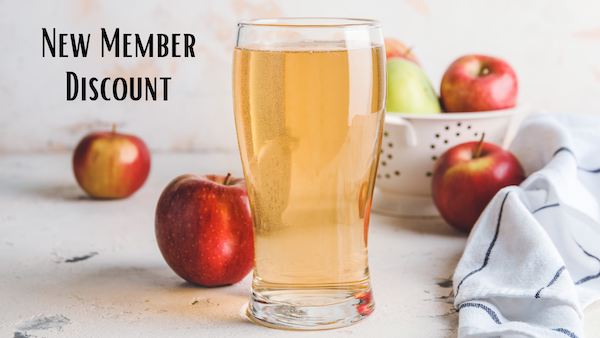
The ACA and Brewbound are pleased to announce a new partnership! Brewbound is offering ACA Members a 25% discount on their Insider subscription. Members can find their discount code in our Resource Hub.
Insiders receive access to all Brewbound site content, the Insider-exclusive newsletter, special virtual events and video content, and discounts on their events and job board.
Brewbound is a leading industry trade publication providing comprehensive information about the beverage space, analysis of industry trends, and in-depth interviews with industry leaders.
March 28: Live Sensory Analysis Webinar with Meriwether Cider
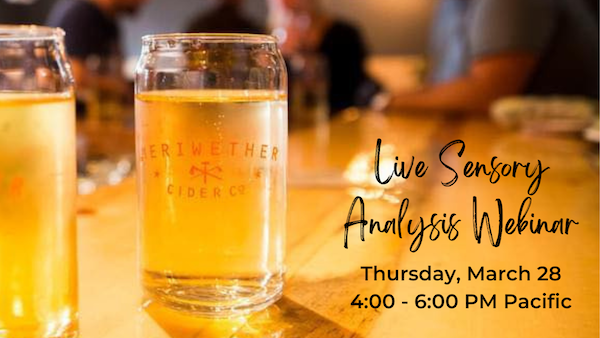
You’re invited to a Live Sensory Analysis webinar on Thursday, March 28, from 4:00 to 6:00 PM Pacific Time! Join our Certified Pommelier panel as they guide you through an immersive sensory experience featuring cider from Meriwether Cider in Idaho.
During this live practice session, you’ll learn how to analyze and appreciate cider like a pro and prep for your Certified Pommelier exam. Not able to make it to the live event? No worries! The webinar will be recorded and available for you to purchase and practice at your convenience.
We recommend ordering Meriwether Cider well in advance so you have it available to practice with during the webinar. You can purchase your Meriwether Cider for the webinar here.
Cost is $30 for non-members and $20 for ACA members. Are you an ACA member? Contact Education Operations Manager Jennie Dorsey for your discount code.
February 24 Open That Cider Bottle
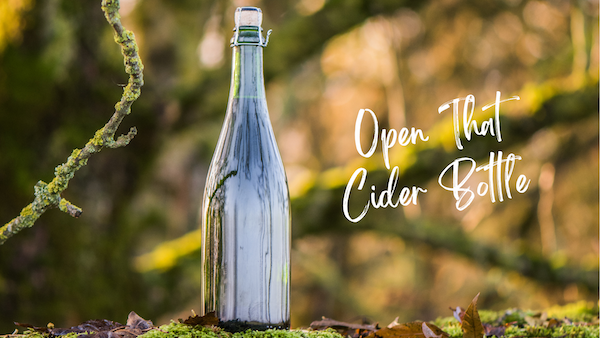
“Open That Cider Bottle” Day is almost here! Join us for this 3rd annual cider tradition on February 24 by celebrating your enjoyment of special bottles of cider on social media. Cider is best when enjoyed, so let’s seize the day!
How to Participate:
Tell us and the world your cider bottle story and post it to Instagram, with the hashtag #openthatciderbottle and tag us @pickcider anytime on Saturday, February 24, 2024. Which cider bottle you want to open is up to you! Whether it’s an old favorite you’ve been saving or a new cider you can’t wait to try; a gift from a friend or a cider you stumbled on in your local bottle shop, we want to hear your bottle story! Also, the ACA will be offering prizes once again for various categories and everyone who participates will be entered to win a cider suitcase.
What Format?
Instagram posts! Whether it’s a photo, series of photos, or a reel be sure to share it as a post on your Instagram profile with the hashtag #openthatciderbottle and tag us @pickcider. We’ll be sharing your Open That Cider Bottle tales to our IG stories throughout the day as well as some of our own.
Prizes
Besides the cider suitcase that all who participate will be entered to win, one winner will be selected by ACA staff to win a Pick Cider t-shirt in the following categories:
- Best Cider Bottle Story – Share what makes the cider you chose so special to you.
- Best Cider Adventure Story – Capture your cider bottle with an image that embodies the spirit of adventure in the world of cider.
- Best Cider/Food Pairing Suggestion – Explore the world of culinary delights that pair well with your chosen cider.
- Best Cider Artistry – Showcase the artistic side of cider whether it be a beautiful label or a beautiful setting for your cider bottle.
A Little History on Open That Cider Bottle
Open That Cider Bottle began in 2022 when we stumbled upon Open That Bottle Night. Open That Bottle Night was started in 2000 by two Wall Street Journal columnists, Dorothy J. Gaiter and John Brecher. Since then, it has become an annual tradition held on the last Saturday of February, where people open that special bottle and share memories. We hope to make Open That Cider Bottle a special tradition for all those who love cider.
“Cider Excellence Award” Winners Announced at CiderCon® 2024 in Portland, Oregon

The American Cider Association (ACA) announced the recipients of their annual Cider Excellence Awards at CiderCon® 2024 in Portland, honoring individuals, businesses, and organizations from around the country for their achievements in, and contributions to, the U.S. hard cider industry.
Award winners this year included:
- Award for Significant Impact on the Industry | Emily Ritchie, Executive Director, NW Cider Association
- Award for Significant Impact on the Industry | Brighid O’Keane, Executive Director, Cider Institute of North America
- Apple Advocate Award | Representative Earl Blumenauer, Oregon
- Apple Advocate Award | Jake Mann, Five Mile Orchard, California
- Member of the Year | Ploughman Cider, Pennsylvania
- Member of the Year | Seattle Cider, Washington
The highest honors given each year are the awards for “Significant Impact on the Cider Industry,” which this year went to Emily Ritchie of Northwest Cider Association for her admirable work promoting the cider industry for the Northwest region (OR, WA, ID, MT & British Columbia), and Brighid O’Keane of Cider Institute of North America for her global efforts to provide rigorous education on quality cider production.
In addition, US Representative Earl Blumenauer of Oregon was awarded the “Apple Advocate Award” for his enduring commitment to level the playing field for cideries through legislation, as well as orchardist Jake Mann for his ongoing partnership with the cider community through his historic family ranch in California, Five Mile Orchard. “Member of the Year” awards were given to both Seattle Cider of Washington and Ploughman Cider of Pennsylvania for their ongoing efforts to give back to their communities and the cider industry.
“This is one of my favorite moments at CiderCon® each year, when we gather together as a community to celebrate people committed to moving the dial for cider,” says Michelle McGrath, CEO of the ACA. “It’s truly humbling to see how much passion and hard work goes into supporting and growing this industry.”
Now in its 9th year, the Cider Excellence Awards were held on January 18th, 2024 at CiderCon®, the ACA’s annual conference, which took place this year in Portland, Oregon from January 17 – January 19, 2024.
2024 Cider Excellence Awards from the American Cider Association

Significant Impact on the Industry | Emily Ritchie is the Executive Director of the Northwest Cider Association, a trade nonprofit that brings cideries and cider lovers together to learn, experience, and enjoy the Northwest cider culture. Representing 100 commercial cidermakers from throughout Washington, Oregon, Idaho, Montana, and British Columbia, the group is dedicated to supporting, promoting, and growing its thriving industry. Emily’s vision of a vibrant, collaborative industry where anyone can share in the success and joy of cider, is brought to life through her strategic thinking and hard work. Her efforts have successfully helped put the Pacific Northwest at the heart of the craft cider movement.

Significant Impact on the Industry | Brighid O’Keane is the Executive Director of the Cider Institute of North America (CINA). CINA is a nonprofit organization of cider industry professionals and educators with a mission to create a quality-driven and sustainable cider industry through education and research. Brighid’s dedicated work to develop curriculum and procure funding for research has helped grow the cider industry by empowering cidermakers through expertise and experience around the globe. Her extensive efforts have helped usher improved quality through CINA education for new and experienced cidermakers alike, thus helping to elevate the reputation of the US hard cider.

Apple Advocate | Representative Earl Blumenauer (OR) is a US Congressman (OR-D) who has advocated for the US Hard Cider Industry for more than a decade by introducing impactful legislation. In 2015, he introduced the Cider Act, which supported American cideries by lessening an unfair tax burden, removing unnecessary red tape, and allowing cider to be more competitive internationally. And this year, he has introduced the Bubble Tax Modernization Act, to amend a minor carbonation tax disparity that has historically had major negative impacts to cidermakers. Earl Blumenauer has championed small businesses and spoken at length about the immense positive impact craft industries have on the economy. (Find out more about the Bubble Bill here: https://ciderassociation.org/reps-blumenauer-kelly-introduce-bubble-bill/)

Apple Advocate | Jake Mann (CA) is rooted in farming. His family has been growing apples in the fertile Pajaro Valley two hours south of San Francisco near Watsonville since the mid-19th century. This unique place has long specialized in growing Newtown Pippins. Jake also actively pursued relationships with cidermakers so that more and more Newtown Pippin single variety ciders made by cideries throughout Northern California proudly announce the Five Mile Orchard as the source of their fruit. An active participant in CiderCon® for many years, Jake is always ready with a smile and an infectious eagerness to continue his family’s legacy by growing amazing apples for cidermaking.
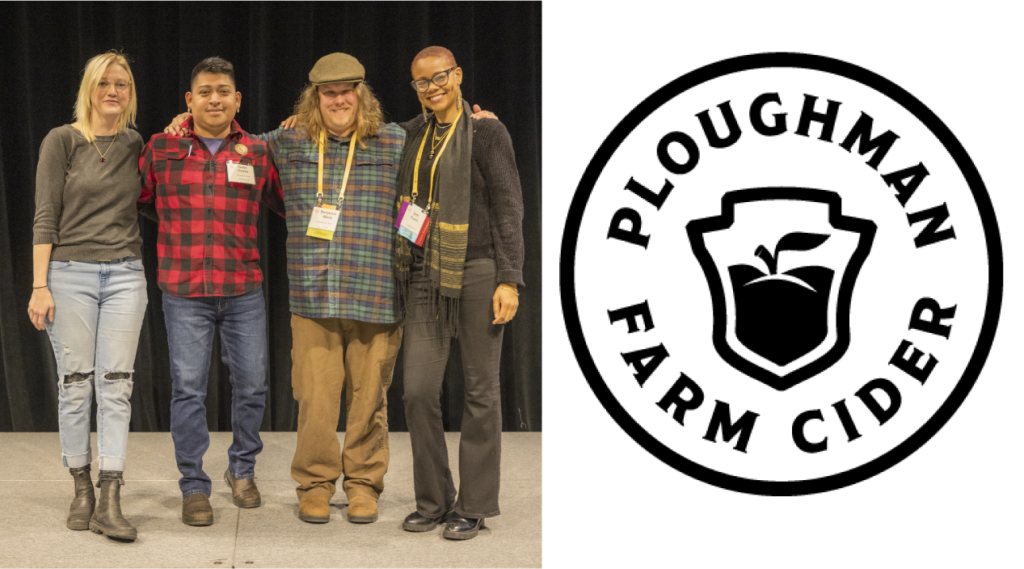
Member of the Year | Ploughman Cider (PA) is a Pennsylvania-based cidery with a long history of supporting their community and helping lift up the cider industry in their state. As active leaders in their state’s cider guild, Ploughman Cider has had a tremendous impact on shaping the local industry. They have also served as an incubator for fledgling cidermakers with their creative collaborations. They are actively committed to the ACA’s mission and mission-related programming, and the ACA is proud to recognize Ploughman Cider for their contributions to both Pennsylvania and the cidery industry at large.
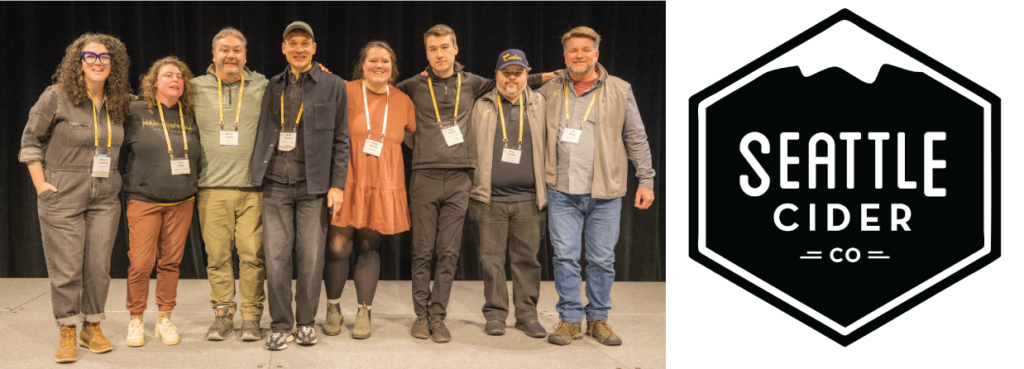
Member of the Year | Seattle Cider (WA) is a Washington-based cidery that has repeatedly stepped up as a leader in the cider world. Their commitment to giving back to their community through thoughtful collaborations, like their partnership with the nonprofit City Fruit, has lifted the bar for what’s expected. They proactively work to create a welcoming environment for all through their taproom programming and several of their team members serve on committees and boards for both the American Cider Association and the Northwest Cider Association. Seattle Cider is being recognized as Member of the Year for their immense contributions to their local community and the cider industry.
About the American Cider Association
The American Cider Association is an organization of cider and perry producers in the United States. It gathers and shares information about cider production, regulations, and apple growing to help members improve their operations, raise awareness, and advance cider in the market. The organization was founded in February 2013. Learn more at ciderassociation.org.

